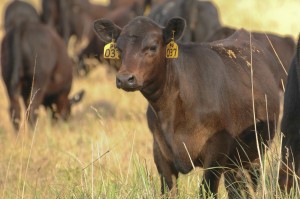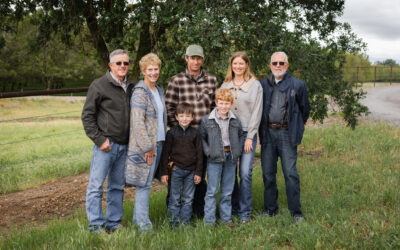
Angus to Limousin=Apples to oranges

They know Angus EPDs (expected progeny differences) like nobody’s business. Er, nobody else’s business. They can recall what were good numbers in say a milk EPD from two decades ago and how that compares to today. I’m not sure how much they could tell you these measures in other breeds, because frankly it doesn’t matter a whole lot to them.
So today’s myth hasn’t come up lately, but we do hear it out in the country so I’m bringing it to light here, too:
Myth: You can compare EPDs from one breed to the next straight up. No conversion needed.
Fact: The Angus.org EPD page describes an EPD as “the prediction of how future progeny of each animal are expected to perform relative to the progeny of other animals listed in the database.” If you’re reading carefully it’s that very last part that carries so much importance.
“Relative to the progeny of other animals listed in the database.”
Each breed compares all its sires to other sires in the same breed registry. As a hypothetical example, if you lined up all the Charolais bulls and found one that would be considered fairly low birthweight compared to that whole population and then you took that same bull and put it in a lineup of all the Angus bulls it probably wouldn’t register as a “low birthweight bull” by Angus standards. You’re comparing against different measures.
So the U.S. Meat Animal Research Center (MARC) in Clay Center, Neb., has calculated across-breed EPDs for years. They use Angus as the base.
Rather than go through and list all the traits and the adjustments, I’ll point to this article that appeared in BEEF Magazine, written by MARC scientists: MARC Releases 2012 Across-Breed EPD Table
“Bulls of different breeds can be compared on the same EPD scale by adding the appropriate adjustment factor to the EPDs produced in the most recent genetic evaluations for each of the 18 breeds. The AB-EPDs [across-breed EPDs] are most useful to commercial producers purchasing bulls of more than one breed to use in crossbreeding programs. For example, in terminal crossbreeding systems, AB-EPDs can be used to identify bulls in different breeds with high growth potential or favorable carcass characteristics.
As an example, suppose a Simmental bull has a yearling weight EPD of + 52.1 lbs., and a Gelbvieh bull has a yearling weight EPD of + 84.0 lbs. The AB adjustment factors for yearling weight (Table 1) are 22.4 lbs. for Simmental and -13.5 lb for Gelbvieh. The AB-EPD is 52.1 lbs. + 22.4 lbs. = 74.5 lbs. for the Simmmental bull, and 84.0 – 13.5 = 70.5 lbs. for the Gelbvieh bull. The expected yearling weight difference when both are mated to cows of another breed (e.g., Angus) would be 74.5 lbs. – 70.5 lbs. = 4.0 lbs.”
Of course if you want to avoid all that math, you could just go with straightbred Angus.
Only kidding.
Well, kind of.
May your bottom line be filled with black ink,
Miranda
You may also like
Legacy in the Golden Land
On a quiet stretch of Northern California rangeland, a different story unfolds. The Borror family’s legacy modestly speaks through the cattle they raise, the ground they steward. The generations who’ve made a life here demonstrate commitment to doing things right, even when no one is watching.
Marbling, Feet and Fertility: Are they related?
The Angus breed has enough genetic diversity to allow breeders, and their commercial bull customers, to make progress across multiple traits simultaneously. One bloodline may be high in marbling but does not check the boxes you need for other traits. That does not mean marbling is the cause—it simply means your search for the ideal genetic pairing is not done.
Working for Premiums
The commercial Angus rancher from Collyer, Kansas, came back for daily homework in 1999 after a year at college. For 25 years now, he’s studied all the ways to grow his family’s W6 Cattle cow-calf herd with Angus at the base. Guided by data, Walt worked to improve the herd from zero Primes to averaging 60 percent. Learning what drives premiums prompted improvement.



